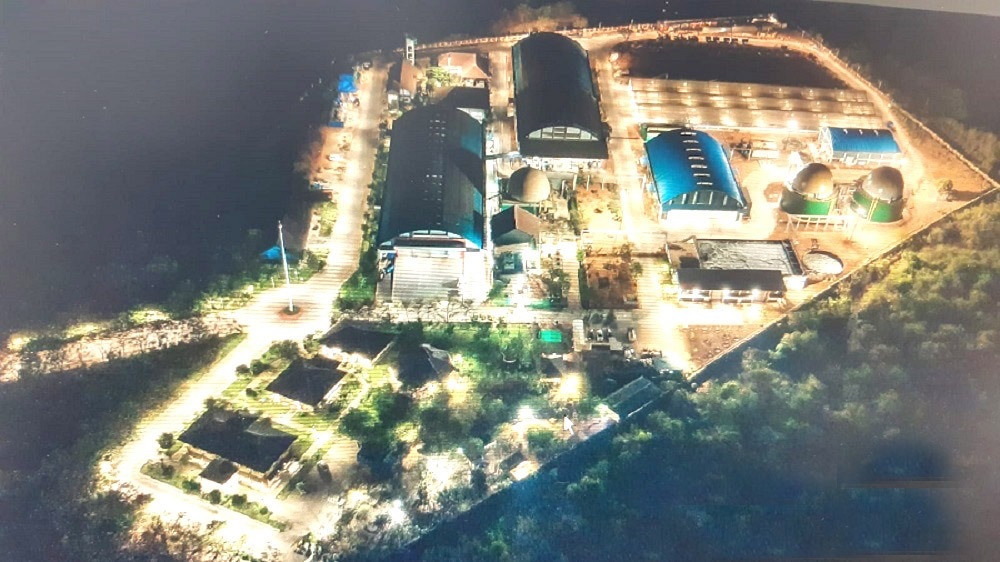GWMC says in possession of land admeasuring one lakh sq mtrs to set up facility

MARGAO
The Integrated Solid Waste Management Facility proposed by the Goa Waste Management Corporation at the Verna Industrial Estate will have a plant not only to treat 250 TPD of solid waste, but will have an Energy Recovery Facility, where Refused Derived Fuel (RDF) will be converted into energy.
In fact, the 250 TPD Energy Recovery Facility plant will treat the RDF and recover steam from the facility which is proposed to be transported to the various industries in Verna, running on steam.
Villagers of Loutolim and surrounding villages of Verna, Nuvem and Nagoa have demanded scrapping of the proposed plant on the Loutolim plateau hosting the Verna Industrial Estate. The GWMC has said the Corporation is already in possession of land admeasuring one lakh square metres to set up the facility.
GWMC Managing Director, Levinson Martins informed that the Corporation has applied for Environmental Clearance and has submitted the Rapid Environmental Impact Assessment (EIA) Report for the Integrated Solid Waste Management Facility Project to Goa-SEAC.
“The pre-feasibility study is being carried out by IVL Swedish Environmental Research Institute, Sweden for Energy Recovery Facility,” Martins added. The GWMC Managing Director informed that the 250 TPD plant at the Verna Industrial Estate has been proposed to cater to meet the requirements and resolve the garbage issues plaguing the villages of Mormugao and Salcete. The plant will take the waste generated in the nine villages coming under the Mormugao taluka, and the 30 villages in the jurisdiction of Salcete.
Besides, Martins said the 250 TPD Energy Recovery Facility will treat the Refused Derived Fuel (RDF) generated from SWMF Verna along with RDF generated from SWMF Saligao, SWMF Cacora, village panchayats, municipal councils, baling stations, etc will be sent to the proposed Energy Recovery Facility.
“Steam which is recovered from the facility shall be transported to various industries in Verna which have a requirement for steam. Proposed capacity of the Energy Recovery Facility: 250 tonnes per day,” he added.
A glance at the GWMC presentation shows that around 35 tonnes of waste is being generated in the nine villages of Mormugao every day. The statistics has further pegged the waste generated by the 30 villages in Salcete taluka to a whopping 80 tonnes per day.
The GWMC has plans to accept the waste generated in the Mormugao Municipal area, presently pegged around 45.42 TPD. Waste generated in the jurisdiction of the Margao Municipal Council is expected to be treated in the city itself in view of the recent assurance by Waste Management Minister Atanasio Monserrate to set up two 25 TPD bio-methanation plants at Sonsodo.
Sources said the proposed 250 TPD plant at the Verna Industrial Estate is right now at the planning stage as the GWMC has applied for the Environment Clearance and the pre-feasibility study for the proposed energy recovery facility is being carried out by the Swedish Institute.
Centralisation: Locals insist on decentralisation of waste mgmt
MARGAO: If the government is bating for a centralised waste treatment plant for the talukas of Mormugao and Salcete villages at the Verna Industrial Estate, villagers of Loutolim and surrounding villages have insisted on decentralisation of waste management as per the National Green Tribunal (NGT).
“The proposed centralised system of an Integrated Solid Waste Management Plant is not required and moreover in a eco sensitive zone which threatens and will have devastating and irreversible impact on the ecology, agro pisciculture complexes, ground water and sources of River Sal and tributary of River Zuari,” villagers contended.
They further contended that the Verna plateau has been over exploited by existence and expansion of unscientific industrial estate which has interfered with the bio-diversity and ecological balance in the region that has created loss of habitat, wildlife and birds and other species which has created a man-animal conflict. “The ground water contamination is effecting the villagers, the aquatic life, scheduled species and migratory birds in the surrounding areas,” the villagers pointed out.